Manet’s greatness is accredited to his truth in life through artistic expression - his innate feelings for his surroundings with sensitivity, his sophistication and thoughtfulness. Through his remarkable eyes and by virtue of the touch of his paint stroke, the subjects in his paintings become alive and vibrant – glowing in the sombre hues of light and dark contrast.
Despite Manet’s radical departure from traditional fine-art academics, one cannot trivialize his influence from Romanticism (Delacroix), Realism (Rembrandt) and Plato’s Cognitive Philosophy. Plato regarded high moral value to the search of truth and viewed imitation as deception. His suspicion of visual arts as a mimesis, therefore not depicting earthly object in its purest form. Manet recognized the essence to coalesce poetry with reality, instilling emotional honesty and truthful spirit into prosaic imagery. It is evident in the ‘Portrait of Zacharie Astruc’ (1866) when he reflected Plato’s four stages of human cognition (namely intelligence, thinking, belief, imagination) as four quadrants in the conceptualization for his subject display.
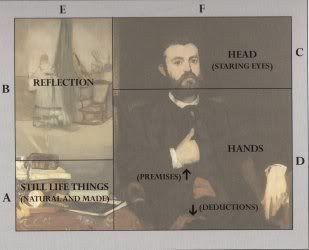
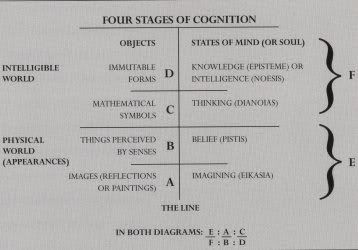
In the 21st century, the definition of visual art has been expanded to include theatre arts and films, Yong Joon is a shining example as disproof to Plato’s centuries old philosophy. We can witness Yong Joon’s insistence on true-to-reality spirit and sincere attitude into his art of acting during the shooting of the ‘drunken scene’ in April Snow. To recreate realistically the complex emotions of betrayal, crushed self-esteem and helplessness, he voluntarily took in alcohol to immerse himself into a semi-drunken state, thereby portraying the external frustration and internal struggle to its true height. If Plato were alive today, imagine the interesting philosophical exchange Yong Joon would have with him on mimesis over different varieties of tea? I would love to be a referee in that discussion (of course, my support would be entirely one-sided as well)!
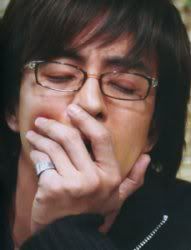
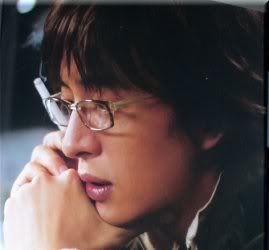
While Manet’s water-coloured drawings display such personal charm and seem almost effortless in its presentation, his gentle message to his attractive admirers appears spiritualized and honest in its homage, exuding warmth and sensitivity. In these artworks, I attempt to use Plato’s famous schematic line to define human cognition. With our charismatic Yong Joon, who embodies both intelligence and knowledge, symbolising the immutable form while Manet’s floral masterpiece represents physical object perceived by the senses. Happy Birthday, Yong Joon! This is for you ...…
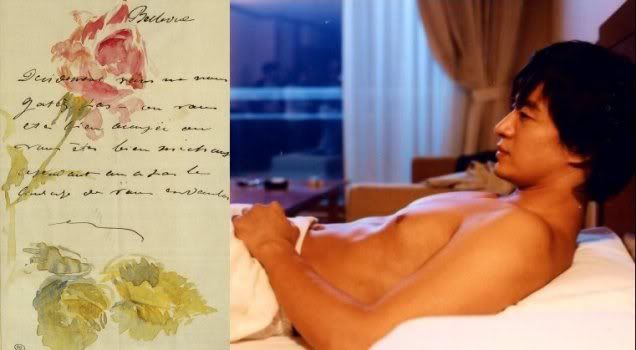
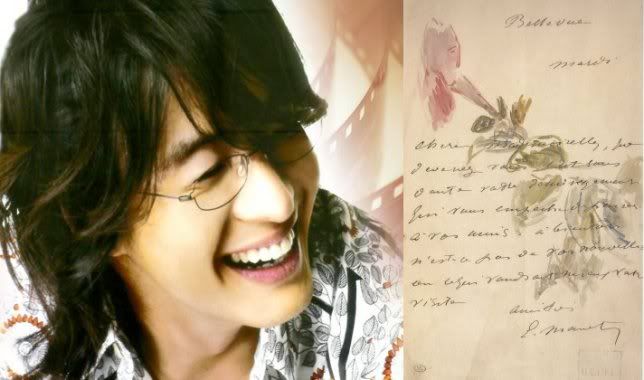
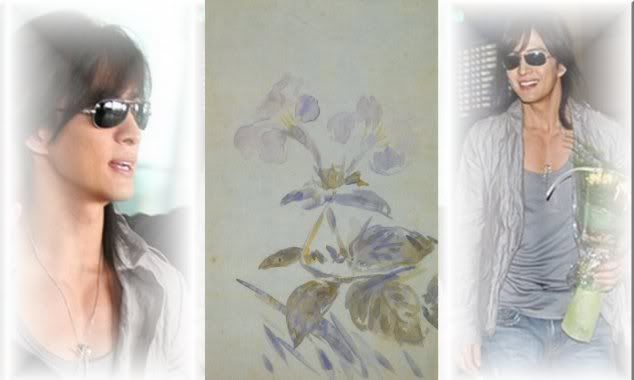
Acknowledgements :
1. Impressionism, Belinda Thomson and Michael Howard, Bison Books Corp. 1988
2. Impressionism Art, Leisure & Parisian Society, Robert L.Herbert, Yale University Press, New Haven & London. 1988
3. Impressionism and Post-Impressionism, James N. Wood, The Art Institute of Chicago. 2000
4. Manet The Still-Life Paintings, George Mauner, The American Federation of Arts. 2000
5. I believe the picture from the first artwork comes from a sister’s artwork. Sorry I do not know the source, please let me know if this is fine by you.

1 comment:
awe jaime, another fine magnificient piece. THANK YOU!
Post a Comment